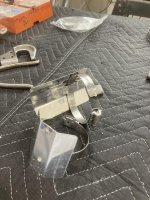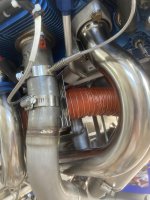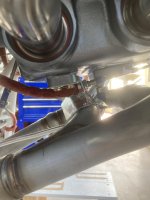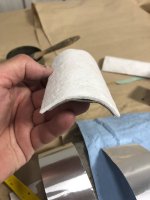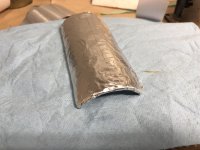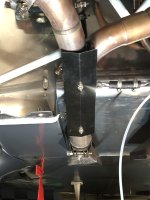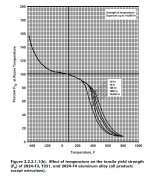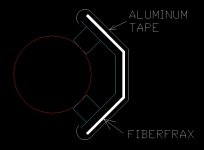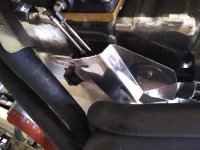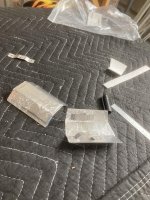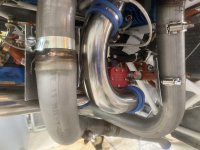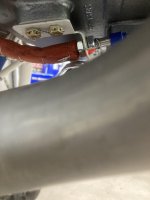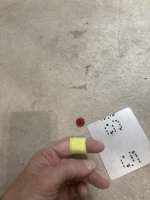Desert Rat
Well Known Member
I was a little concerned about how close the exhaust runs under the throttle cable, so in addition to firesleeving it, I spent some time today busting out a exhaust heat shield.
I made it out of .025 scrap with the tab that the band clamp slides through .032.
I made the first one too short, so I ended up with two. The shorter one I used up by where the heater scat runs over the data plate. There is about a 1" air gap between the pipe and the scat, and the shield stands off from the exhaust pipe about 1/4"
Down underneath, there isn't much clearance. I built it so that it's only standing off the exhaust by about 3/16"
On the upper one I don't know if it's even necessary, but I had it so I put it in. I'm not sure if the aluminum will hold up to the heat that close to the exhaust valve. What do you guys think? Try it out and see, scrounge up some stainless and remake it? File it in the round bin as unnecessary?
For the lower one, is it better to have a 3/16" standoff from the pipe and a bigger air gap above? Or would it be better to have it a bigger air gap below and less space between the shield and the cable?
As always, I'm open to all input.
I made it out of .025 scrap with the tab that the band clamp slides through .032.
I made the first one too short, so I ended up with two. The shorter one I used up by where the heater scat runs over the data plate. There is about a 1" air gap between the pipe and the scat, and the shield stands off from the exhaust pipe about 1/4"
Down underneath, there isn't much clearance. I built it so that it's only standing off the exhaust by about 3/16"
On the upper one I don't know if it's even necessary, but I had it so I put it in. I'm not sure if the aluminum will hold up to the heat that close to the exhaust valve. What do you guys think? Try it out and see, scrounge up some stainless and remake it? File it in the round bin as unnecessary?
For the lower one, is it better to have a 3/16" standoff from the pipe and a bigger air gap above? Or would it be better to have it a bigger air gap below and less space between the shield and the cable?
As always, I'm open to all input.



